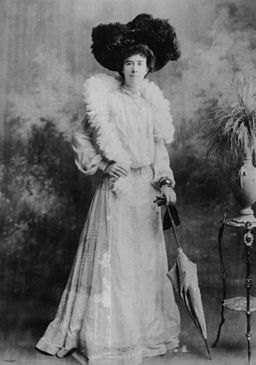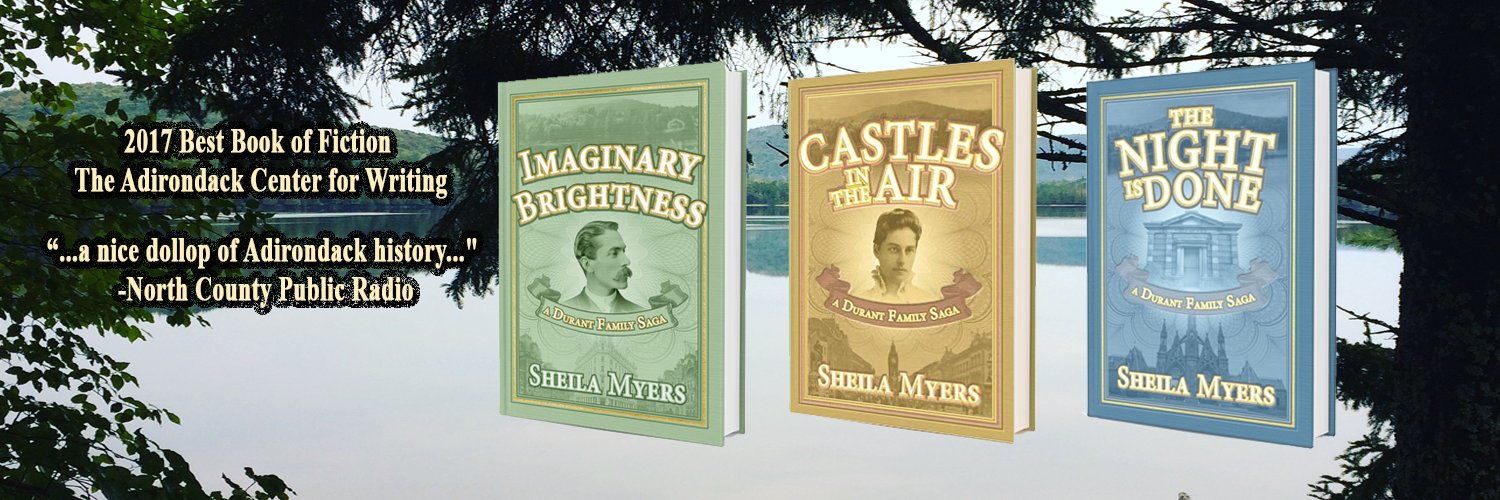|
Inevitably when I give a talk about my Durant Family Saga trilogy, I get asked if I've been approached by producers who want to turn it into a tv series or movie. Usually, these people are avid fans of the t.v. series Hell on Wheels. This show had a five season run starting in 2011. It was an AMC series that was then picked up by Netflix. The setting is mid 1860s and the plot is about the construction of the Transcontinental Railroad which connected the eastern and western states in America.
I was almost done writing my first novel in the saga when someone alerted me to the series. I hated to watch it at first because I didn't want the show to taint my view of the main characters in my novel who also play a leading role in the tv series: Dr. Thomas Durant (Doc Durant) and Collis P. Huntington. In the series Doc Durant is played by Colm Meany who does an excellent job portraying him as the blustery, conniving robber baron that he was as head of the Union Pacific. Collis P. Huntington, played by Tim Guinee, is head of the Central Railroad, and Doc's arch enemy. When Doc Durant was done with the Transcontinental he was mired in debt and lawsuits. But he happened to have acquired 1/2 million acres of land in the Adirondack wilderness to exploit. He summoned his son William and daughter Ella back home from their posh life in England to help him regain the family fortune. When Doc Durant dies, his enemy Huntington befriends Doc's son William (a friendship that leads to William's downfall). When I discovered this I knew I had a great plot twist on my hands. I continued to watch the series as I wrote books two and three but by then, Doc Durant was dead (he dies in novel 2) and I was focused more on Collis and his relationship with Doc's son William. My novels continue where the Hell on Wheels Series ended. I'm not one to fantasize about success or making millions, but when I realized what I was writing was a sequel to the stories of two of the main characters on Hell on Wheels, I registered my saga with the Writers Guild just to be on the safe side. While having your books picked up for production is every author's dream, it's also a long shot. At this time, my pitch is out there - sitting in industry person's email inbox. Where will it end up? Who knows? If I've learned anything from this process it's that a lead may take you on an incredible journey you hadn't anticipated. When I started writing the Durant Family story, I thought I was going to be writing a love story set in the wilderness, with William Durant as the leading man, and found myself tracking his family story all over the place: museums and libraries all up and down the east coast, England, and an auction house. I had descendants of the Durants provide me with family lore; a couple from Pennsylvania tell me they had Ella Durant's scrapbook sitting in their attic for over three decades and didn't know what to do with it until they read my blog about her; and an archivist at the NY Law Library help me track down a Durant sealed divorce file from 1898. When I started this writing journey I never thought I'd be breaking the wax seal of a 100 year old divorce file in the basement of a Manhattan Courthouse; nor did I think I'd be writing a trilogy, or speaking to over 300 people each year about my novels. If I've learned anything it's that one never knows where a story might lead. You just gotta have faith it will end well.
11 Comments
9/2/2020 Wearing Our Feathered Friends While reading Edith Wharton’s Age of Innocence, set in the 1870s in New York City, I remember being taken aback by a reference to a woman carrying a fan made of Eagle feathers to the opera. Oh dear, I thought. Our national bird? A protected species? Why, just recently they stopped construction of a dock near my hometown because a pair of Eagles were nesting in the trees nearby. Then during the course of my research for my second novel in the Durant family trilogy, I came across a reference to William West Durant taking off with an Adirondack guide to shoot three Loons that had the bad luck to be stuck in a cove as it had iced-over one night in early spring (1890). Loons are heavy and can’t take off without a flyway and so, as the memoir I found at the Adirondack Museum goes, the Loons managed to keep a small opening in the ice during the night but needed the cove to melt so that they had enough space to take off. Unfortunately, they never got that chance (you’ll have to read story two to find out what happens to them). I was aghast. My modern sensibilities get in the way of my research at times. While describing ladies’ fashions during the Victorian era I had to contend with the fact that women loved wearing the artifacts of dead birds on their hats or to adorn their outfits. After all, it wasn’t until Boston socialite Harriet Hemenway and her cousin Minna started a a boycott against the practice of hunting exotic birds down to adorn lady’s hats in 1896 that the abomination of the practice came to light. Indeed, these two lady mavericks are credited with starting the Audubon Society to save birds from extinction. They first heard about the plight of birds after an amateur ornithologist, Frank Chapman, wrote about his experience watching bird hunters go after an egret rookery, plucking the feathers and leaving the young to die in the trees. Chapman is also credited with surveying for birds on the streets of New York City. In one day in 1886 Chapman counted 542 hats adorned with 174 whole birds or their parts. He claimed to have counted over forty different species of birds on ladies’ hats: pheasants, peacocks, egrets, scarlet tanagers, robins, and blue jays, just to name a few. It wasn’t until the turn of the century that it started to become unfashionable to be wearing a dead bird on one’s head, much less a bird that was considered endangered. This points to the fact that at the time, people believed our resources to be limitless, or never knew the difference and didn’t care. 9/2/2020 1 Comment Book Recommendations and News |
AuthorSheila Myers is an award winning author and Professor at a small college in Upstate NY. She enjoys writing, swimming in lakes, and walking in nature. Not always in that order. Archives
April 2024
CategoriesAll Adirondacks Algonquin Appalachia Award Cades Cove Canada Chestnut Trees Christmas Civilian Conservation Corps Collis P. Huntington Creativity Doc Durant Durant Family Saga Emma Bell Miles Finger Lakes Great Depression Hell On Wheels Historical Fiction History Horace Kephart Imagination National Parks Nature Publishing Review Screenplay Short Story Smoky Mountains Snow Storm Stone Canoe Literary Magazine Thomas Durant Timber Wilderness World War II Writing |
|
|
All materials Copyright 2022
Any reproduction, reprint or publication without written consent of author prohibited. |


 RSS Feed
RSS Feed